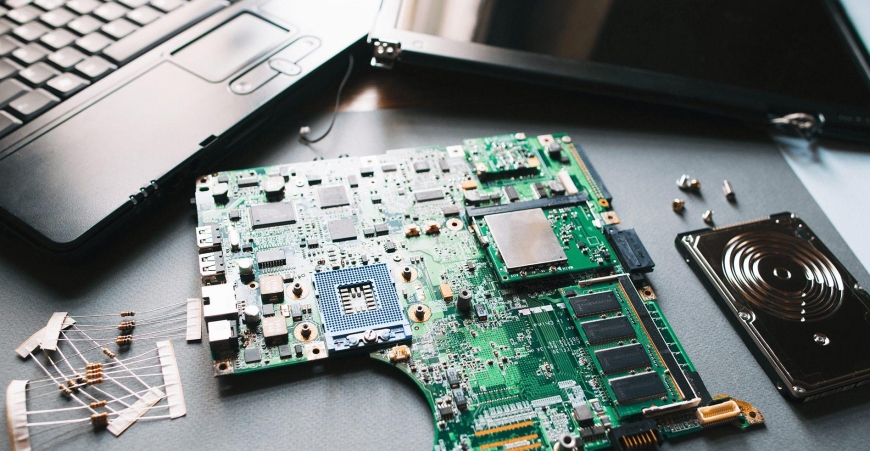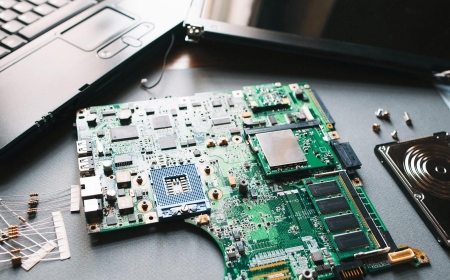Laptop Motherboards: A Complete Guide to Their Role, Features, and Compatibility
Discover how laptop motherboards power your device. Learn about features, compatibility, and choosing the right motherboard for your laptop’s performance.

Laptop motherboards are the core of every portable computer. They connect and control all internal hardware, allowing your device to function smoothly and efficiently. Understandinglaptop motherboards is essential whether youre repairing a machine, upgrading components, or simply curious about how your laptop works.
In this comprehensive guide, well explore what makes laptop motherboards unique, their essential components, how to identify and replace them, and how they differ from desktop counterparts.
Understanding the Role of a Laptop Motherboard
The motherboard in a laptop is a printed circuit board (PCB) that serves as the foundation of the entire system. It acts as the communication hub that links the CPU, memory, storage, GPU, and other hardware. Without the motherboard, no data can flow between components, and the laptop cannot operate.
Why the Motherboard Matters
The motherboard dictates what your laptop is capable of in terms of processing power, RAM limits, storage type, display compatibility, and connectivity features. It is often pre-designed to fit a particular laptop model, meaning it cannot be upgraded or swapped easily like a desktop version.
Key Components of a Laptop Motherboard
Although more compact than desktop versions, laptop motherboards still contain all the essential components needed for full system operation. These include:
1. Central Processing Unit (CPU) Socket or Chip
Most modern laptops use CPUs that are soldered directly onto the motherboard using BGA (Ball Grid Array) technology. In rare cases, socketed CPUs allow upgrades.
2. RAM Slots
Typically, laptops use SO-DIMM RAM slots. Some ultra-thin models have soldered RAM, making upgrades impossible without replacing the entire board.
3. Graphics Processing Unit (GPU)
Integrated graphics are part of the CPU in many laptops, but gaming or workstation models may include a dedicated GPU, also often soldered.
4. Chipset
The chipset controls data between the CPU, memory, and peripherals. It affects performance features like USB speeds, PCIe lanes, and more.
5. Power Circuitry
Voltage regulators, capacitors, and other power management features ensure each component receives stable power.
6. Storage Interfaces
Laptop motherboards typically feature connectors for SATA drives or newer M.2 NVMe SSDs, supporting faster read/write speeds.
7. I/O Ports and Controllers
USB ports, HDMI, headphone jacks, and Ethernet ports are controlled through the motherboard, often integrated or via daughterboards.
How Laptop Motherboards Differ from Desktop Motherboards
While both types of motherboards serve the same core function, they differ significantly in design and flexibility.
| Feature | Laptop Motherboard | Desktop Motherboard |
|---|---|---|
| Form Factor | Custom and compact | Standard sizes (ATX, Micro-ATX, etc.) |
| Upgradeability | Very limited | Highly upgradeable |
| Component Integration | Many components soldered | Mostly modular |
| Power Source | Designed for battery/DC input | Designed for AC PSU |
| Cooling Requirements | Low-profile heat sinks/fans | Larger, replaceable coolers |
These differences mean that servicing or replacing laptop motherboards often requires exact model matches and professional skill.
Choosing the Right Laptop Motherboard Replacement
Replacing a laptop motherboard isnt as straightforward as swapping out parts in a desktop. It requires precision and attention to several compatibility factors.
1. Model and Brand Compatibility
Each laptop has a specific motherboard model. You must match the manufacturer and model series to ensure correct fitting and function.
2. Integrated Components
If the CPU or GPU is soldered on, the replacement board must include the same or compatible components.
3. BIOS and Firmware
Motherboards come with firmware tailored to the laptop. The wrong BIOS version could prevent booting or cause hardware conflicts.
4. Cost Efficiency
Sometimes, a new motherboard costs nearly as much as a replacement laptop. Consider your options if your device is more than a few years old.
5. Warranty and Reliability
Buy from trusted sources offering tested and warrantied parts. Refurbished motherboards can be reliable if sourced properly.
Signs of a Failing Laptop Motherboard
A faulty motherboard can affect multiple aspects of laptop performance. Here are common warning signs:
-
Laptop wont turn on or charge
-
Frequent system crashes or reboots
-
No display despite working screen
-
USB ports and other peripherals stop responding
-
Burning smell or visible damage on the board
If you notice any of these symptoms, its crucial to consult a technician for diagnosis before replacing any hardware.
Can You Upgrade a Laptop Motherboard?
Generally, nomost laptops do not allow motherboard upgrades due to their custom designs. The form factor, port alignment, and internal layout are all engineered for a specific chassis. Even if you find a board that fits, firmware and power requirements may differ.
Instead of upgrading the board, consider upgrading RAM or storage if your laptop allows it. For performance boosts beyond that, buying a new laptop may be the better solution.
Where to Buy Laptop Motherboards
Replacement laptop motherboards are available through several sources:
-
Official Service Centers: Usually more expensive but reliable and with proper warranty.
-
Third-Party Suppliers: Online electronics retailers or platforms like eBay and AliExpress offer replacements.
-
Refurbishers: Businesses specializing in laptop repairs often carry tested used boards.
Make sure the part number matches your current motherboard exactly. If in doubt, consult the laptops service manual or support team.
Future of Laptop Motherboards
As technology advances, laptop motherboards are evolving:
-
Apple Silicon and ARM Chips: Apples M-series chips represent full SoC (System-on-Chip) architecture, integrating CPU, GPU, RAM, and more into a single unit.
-
Thinner Designs: Ultrabooks and 2-in-1s favor highly integrated, non-upgradeable motherboards.
-
Modular Laptops: Projects like Framework are attempting to create upgradeable laptops, making future motherboards more user-replaceable.
These trends highlight a move toward efficiency and thinness at the cost of upgradeability.
Conclusion
Laptop motherboards are compact yet incredibly complex components that determine your device's capability and reliability. From powering the CPU to managing connectivity and performance, they are the heart of your laptop. While replacing or upgrading them can be challenging due to limited compatibility and integration, understanding their role can help you make better decisions about repairs, upgrades, or new purchases.
Whether you're a technician, tech enthusiast, or everyday user, recognizing the importance of laptop motherboards ensures your device continues to perform at its best.

























